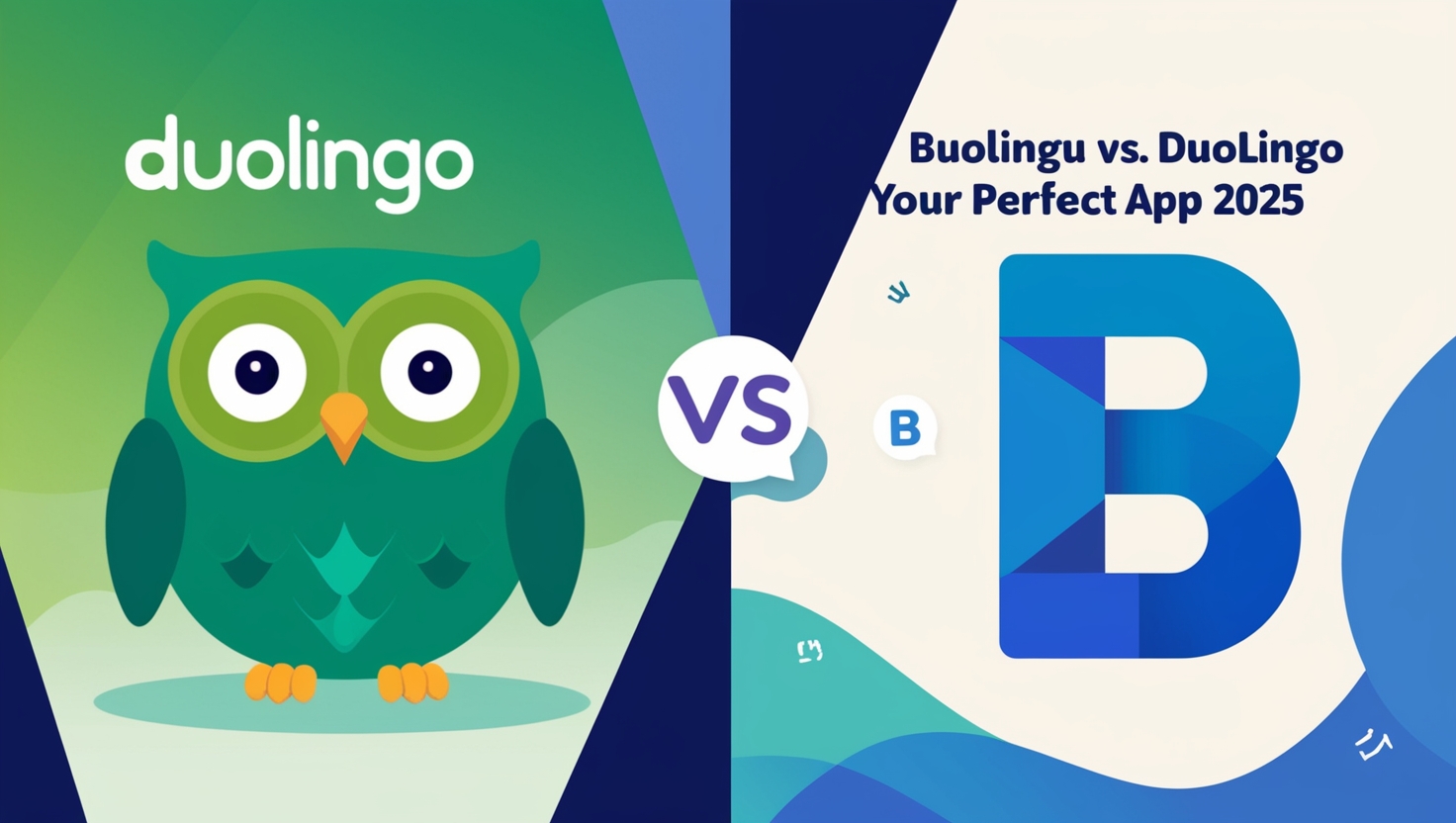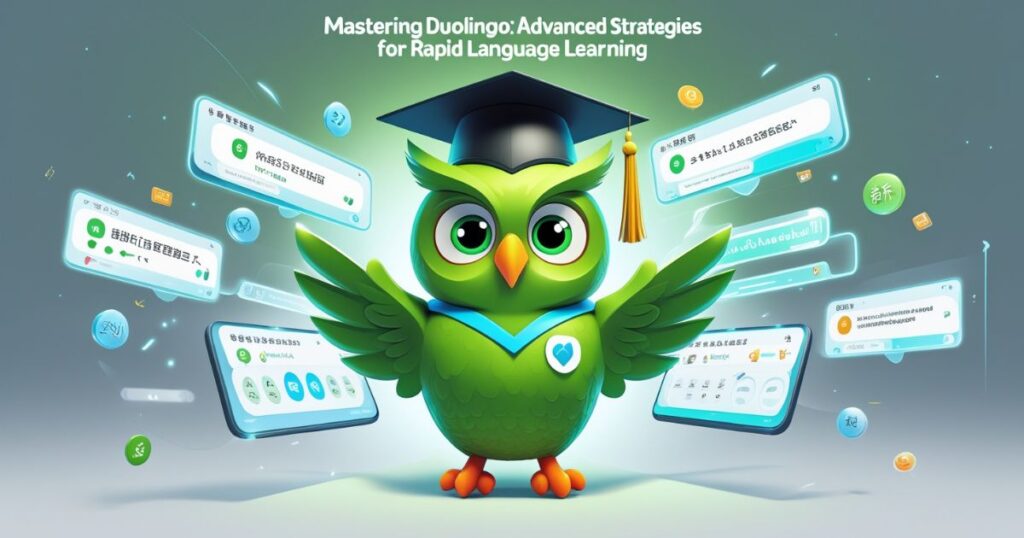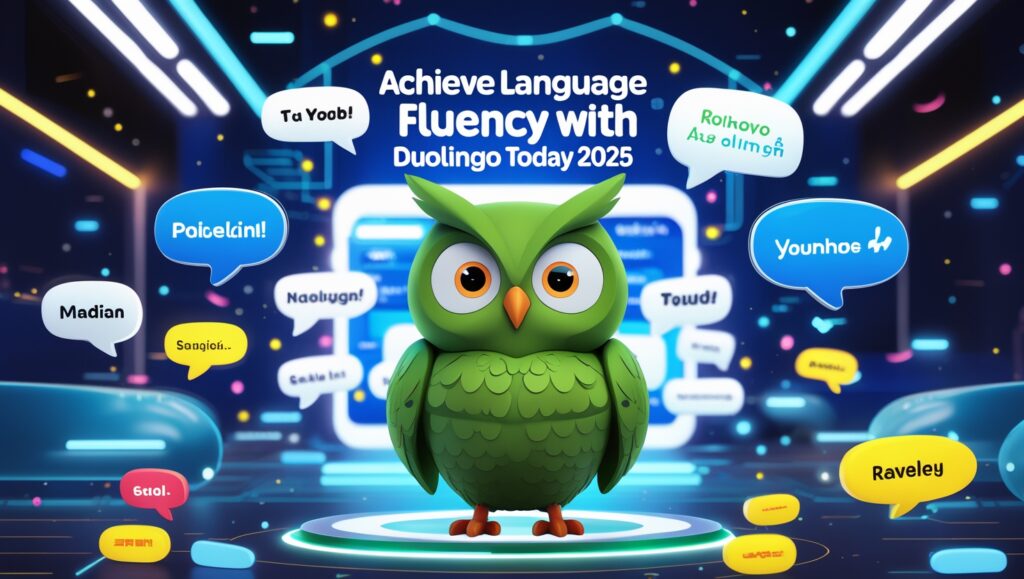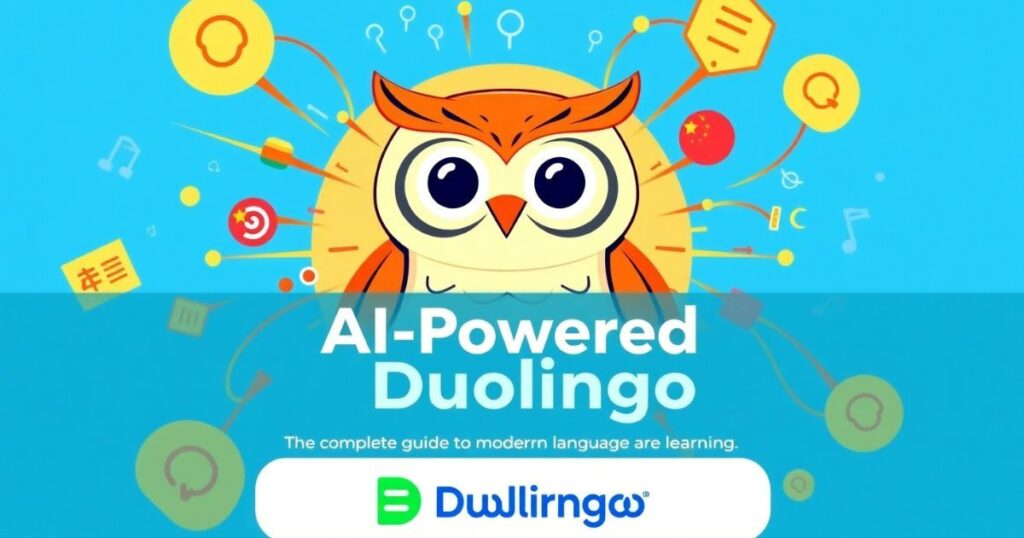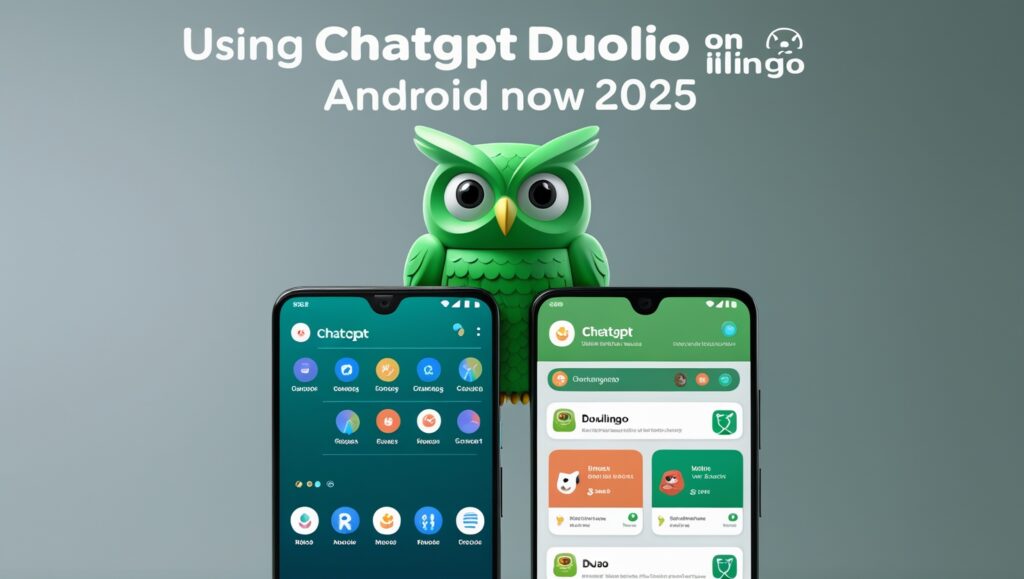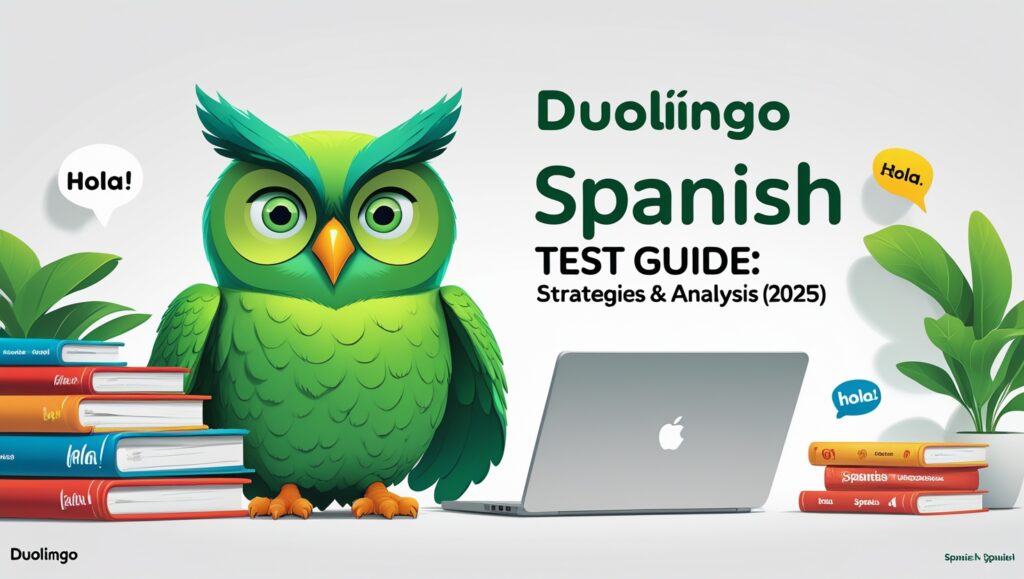In today’s digital age, mastering a new language has never been more accessible. Busuu and Duolingo are both popular language learning apps that offer different features and approaches to learning. The best app for you depends on your goals and learning style. After analyzing countless Reddit discussions and user experiences comparing Busuu vs Duolingo, we’ve created this comprehensive guide to help you make an informed decision.
Quick Snapshot: Busuu vs Duolingo at a Glance
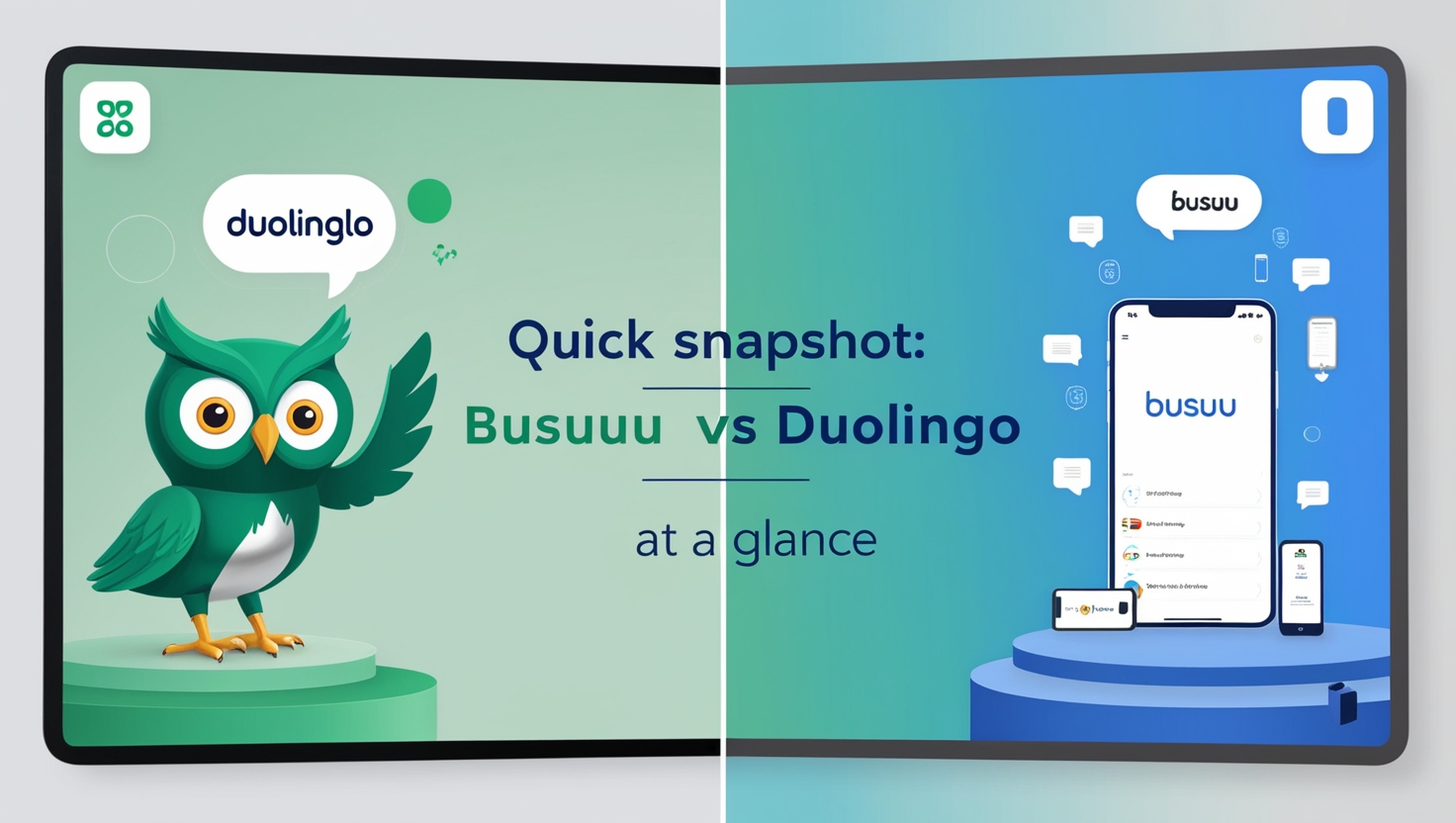
Before diving deep into specifics, let’s understand what makes each platform unique. Language learning apps have revolutionized how we acquire new languages, and these two platforms stand at the forefront of this revolution.
Key Differences Overview
| Feature | Busuu | Duolingo |
| Learning Focus | Structured learning with CEFR alignment | Gamified approach with casual learning |
| Available Languages | 13 major languages | 30+ languages including unique options |
| Price Range | $9.99-$10.99/month | Free with optional Super ($7/month) |
| Best For | Serious language learners | Casual learners and beginners |
| Unique Strength | Native speaker feedback | Gamification and engagement |
Learning Experience Deep Dive
Course Structure and Lesson Format
Interactive lessons form the backbone of both platforms, but their approaches differ significantly.
Busuu’s Approach
- Focuses on structured learning aligned with CEFR levels
- Comprehensive grammar explanations
- Emphasis on practical conversations
- Lessons typically last 10-15 minutes
Duolingo’s Method
- Gamified learning with bite-sized lessons
- Speech recognition technology for pronunciation
- Daily streaks and XP points system
- Short 5-minute lessons perfect for busy schedules
Language Options Available
When comparing Busuu vs Duolingo for specific languages like French or Japanese, the availability and depth of content varies significantly.
Language Coverage:
| Language Type | Busuu | Duolingo |
| Popular European | ✓ | ✓ |
| Asian Languages | Limited | Extensive |
| Endangered Languages | ✗ | ✓ |
| Constructed Languages | ✗ | ✓ (Including Klingon) |
“While Duolingo offers more language options, Busuu provides deeper content for its available languages” – Based on aggregated user reviews from Reddit
Speaking and Pronunciation Features
Busuu vs Duolingo takes distinct approaches to speaking and pronunciation practice, catering to different learner needs. Busuu provides personalized pronunciation tips through native speaker feedback, often within 60-90 minutes, while encouraging real-world interactions with language partners. In contrast, Duolingo offers instant AI-powered feedback via speech recognition exercises, listening comprehension drills, and interactive speaking exercises, promoting faster but automated feedback.
Premium vs Free: Pricing and Value Comparison
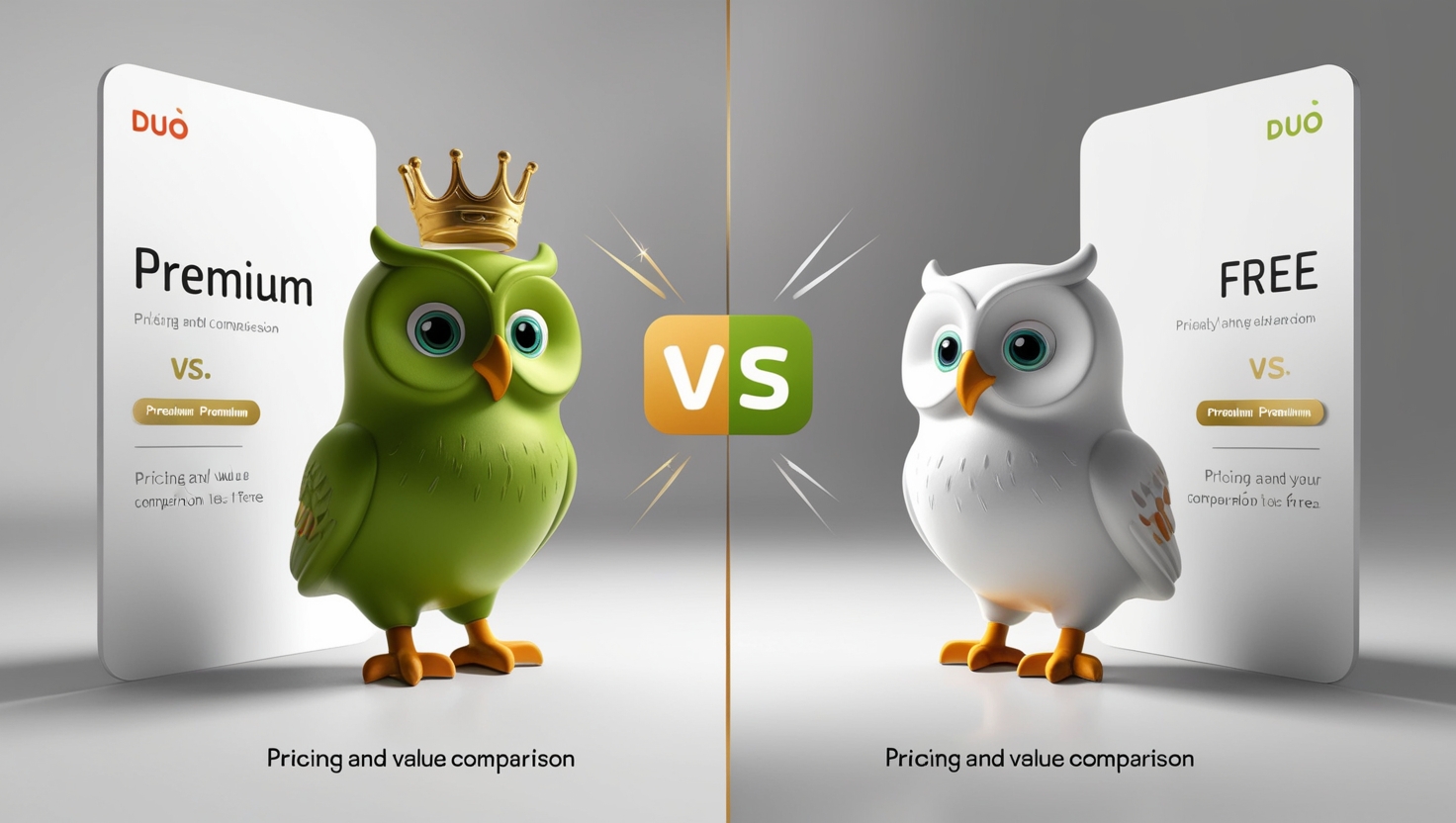
Understanding the pricing structure is key when choosing Busuu vs Duolingo. Busuu offers a premium plan with additional features, while Duolingo provides most of its content for free. The trade-off involves access to advanced tools like offline learning, certifications, and personalized courses. For cost-conscious users, Duolingo stands out, but Busuu delivers better value for serious learners.
Free Features
Busuu offers basic lessons with limited vocabulary practice, making it ideal for structured learners. Duolingo, on the other hand, provides full course access supported by ads, catering to those seeking comprehensive free features. Both platforms serve different learning styles, with Busuu focusing on professional design and Duolingo excelling in gamified accessibility.
Premium Features Comparison
For premium users, Busuu Premium costs $9.99/month and includes McGraw Hill certification, advanced progress tracking, and an ad-free experience. Duolingo Super, priced at $7.00/month, offers offline access and ad-free usage but lacks professional certification. Choose Busuu for structured learning or Duolingo for cost-effective gamified options.
User Experience and Interface
The user interface (UI) in Busuu vs Duolingo is designed to keep learners engaged. Duolingo’s gamified, colorful layout appeals to casual learners, while Busuu’s clean and professional design suits structured study. Intuitive navigation, progress displays, and ease of use in both platforms ensure users maintain motivation throughout their language-learning journey.
Mobile App Experience
Both apps provide seamless mobile and desktop experiences. Busuu emphasizes a clean, professional design, appealing to traditional learners. Duolingo, with its colorful and engaging interfaces, attracts users who prefer interactive and gamified elements. Each caters to distinct learning preferences but maintains cross-platform functionality.
Cross-Platform Functionality
Both platforms support cloud sync across devices, ensuring a consistent experience. They also enable offline learning, making them convenient for learners on the go. While Busuu focuses on a professional learning environment, Duolingo thrives on adaptability and accessibility.
More Post: Achieve Language Fluency with Duolingo Today 2025
Effectiveness and Learning Outcomes
Research-backed data highlights unique advantages in Busuu vs Duolingo. Busuu focuses on structured, conversational learning with a CEFR-aligned curriculum, ensuring measurable outcomes. Duolingo’s gamified model builds vocabulary but lacks depth in conversation skills. For those aiming at fluency, Busuu proves more effective, while Duolingo excels at introducing basic concepts.
Success Metrics
Research shows Busuu users achieve a college semester equivalent in 22.5 hours, while Duolingo users require 34 hours for similar progress. Additionally, 84% of Busuu users display improved written test results, reflecting its structured methodology.
User Achievement Statistics
Busuu users report a 75% improvement in oral tests, making it ideal for speaking proficiency. Duolingo users, meanwhile, excel in vocabulary retention due to its gamified approach. Both platforms ensure positive outcomes for consistent learners.
Who Should Choose Which App?

Choosing between Busuu vs Duolingo depends on individual goals. Busuu benefits those looking for comprehensive, certification-based learning, whereas Duolingo suits casual learners wanting to learn at their pace. Advanced learners may prefer Busuu for its focus on real-world dialogues, while Duolingo’s playful model engages beginners.
Choose Busuu if you
- Want structured, CEFR-aligned learning
- Prefer traditional learning methods
- Need certification for professional purposes
- Value native speaker feedback
Choose Duolingo if you
- Are a beginner in language learning
- Prefer gamified learning experiences
- Want to learn multiple languages
- Need a free option with comprehensive features
Cultural Content and Regional Learning
Language learning thrives on cultural immersion. In Busuu vs Duolingo, Busuu offers regional and cultural content, enhancing its practical relevance. Duolingo, although fun, provides limited cultural depth. Busuu’s emphasis on real-life contexts and localized materials prepares learners for culturally appropriate communication in various regions.
Busuu’s Cultural Integration
Busuu excels in cultural immersion with dedicated cultural notes, explanations of regional variations, and tips on business etiquette. Lessons also emphasize local customs, enriching learners’ global understanding.
Duolingo’s Approach
In the Busuu vs Duolingo debate, Duolingo’s approach incorporates essential cultural elements into its language lessons. While focusing on practical usage, it helps learners immerse themselves in everyday situations. However, it doesn’t provide extensive dialect coverage, which could limit cultural nuances. Still, Duolingo’s integration of NLP enhances understanding and keeps the experience engaging.
Progress Assessment and Tracking Methods
Tracking progress effectively is a core feature of both platforms. In Busuu vs Duolingo, Busuu uses in-depth metrics, including CEFR-level tracking and AI feedback. Duolingo motivates users through streaks, leaderboards, and skill trees. Busuu’s approach suits serious learners, while Duolingo appeals to competitive, casual users.
Busuu’s Assessment Tools
Busuu aligns with CEFR levels, offering detailed analytics, skill-specific evaluations, and professional certification. These tools cater to learners aiming for measurable and recognized language mastery.
Duolingo’s Tracking Features
Duolingo’s tracking system, such as the crown level and achievement badges, creates an interactive experience for learners. Weekly reports and leaderboards gamify the language learning process, encouraging users to continue. These features effectively motivate and engage learners, fostering a sense of progress. In the Busuu vs Duolingo debate, Duolingo stands out for its tracking tools.
Community and Social Learning Features
Community interaction is a strength of both platforms. In Busuu vs Duolingo, Busuu offers direct feedback from native speakers, fostering social learning. Duolingo relies on discussion forums and leaderboards to build community. While both encourage engagement, Busuu’s practical, interactive corrections provide a more collaborative learning experience.
Busuu Community Features
Busuu thrives on native speaker corrections, language exchange partnerships, and group learning sessions. A robust peer review system ensures a collaborative and enriching experience.
Duolingo Social Elements
- Leaderboards
- Friend competitions
- Discussion forums
- Team challenges
Visual Learning and Multimedia Integration

Both apps excel in visual and multimedia learning but differ in approach. In Busuu vs Duolingo, Duolingo integrates gamification with vibrant visuals to reinforce concepts. Busuu utilizes video lessons, interactive exercises, and situational dialogues to cater to diverse learning styles, making it ideal for focused language acquisition.
Busuu’s Visual Elements
Busuu offers professional video content, cultural imagery, and situation-based scenarios, enhancing practical application. Business context visuals further support learners targeting professional use.
Duolingo’s Visual Approach
Duolingo’s visual approach uses engaging cartoon-style illustrations, animated rewards, and interactive stories. These visual tools make the learning process intuitive and fun for users of all ages. By incorporating LSI and memory aids, Duolingo ensures the content is accessible and entertaining. Its use of visuals distinguishes it from other platforms in the Busuu vs Duolingo comparison.
Specialized Learning Paths
Individual learning needs vary, and Busuu vs Duolingo caters to this diversity. Busuu offers specialized courses, including travel, business, and certification preparation. Duolingo’s uniform approach is suitable for vocabulary building but lacks tailored options. Advanced learners and professionals may benefit more from Busuu’s customized content.
Busuu’s Specialized Courses
Busuu caters to specific needs with business language tracks, travel-focused lessons, and industry-specific vocabulary. Additionally, it supports professional certification preparation for career-focused learners.
Duolingo’s Special Features
Duolingo enhances immersion with stories, podcasts in select languages, and engaging events. Its youth-focused paths encourage early language acquisition through fun and interactive methods.
Mobile and Desktop Integration
Cross-platform usability is critical for language learners. Busuu vs Duolingo shine with robust mobile and desktop compatibility. Duolingo’s app is lightweight and gamified, ideal for on-the-go use. Busuu’s platform supports offline access and syncs seamlessly, ensuring consistent learning across devices, catering to varying schedules.
Busuu Platform Integration
- Seamless progress syncing
- Consistent interface across devices
- Offline lesson access
- Cloud-based progress storage
Duolingo Cross-Platform Features
- Real-time synchronization
- Adaptive screen layouts
- Background audio lessons
- Quick practice options
Success Metrics and Learning Effectiveness
Both platforms measure success through unique approaches. In Busuu vs Duolingo, Duolingo’s gamification and streak-based metrics motivate casual learners. Busuu’s research-backed outcomes and CEFR alignment provide measurable fluency markers, appealing to learners pursuing certifications or professional growth.
Study Time to Proficiency
| Proficiency Level | Busuu | Duolingo |
| Basic Fluency | 3 months | 4-5 months |
| Intermediate | 6 months | 8-9 months |
| Advanced | 12 months | 15+ months |
AI Integration and Smart Features
Artificial Intelligence (AI) enhances Busuu vs Duolingo experiences. Duolingo’s AI offers adaptive exercises and streak reminders, maintaining engagement. Busuu employs AI for personalized learning plans and predictive feedback. The smart features in both platforms simplify learning, though Busuu’s focus on depth outshines Duolingo’s casual methods.
Busuu’s AI Features
Busuu vs Duolingo, both apps offer advanced AI features to enhance language learning. Busuu utilizes AI grammar review for error correction, along with personalized study plans that adjust to your progress. It also offers adaptive learning paths, smart review scheduling, and other techniques to optimize learning effectiveness.
Duolingo’s AI Implementation
When comparing Busuu vs Duolingo, Duolingo’s AI focuses on predictive learning patterns that analyze learner behavior. It adapts difficulty to each user, ensuring that the challenges are appropriate. Additionally, Duolingo features mistake pattern recognition, and adaptive testing that adjusts based on the learner’s strengths and weaknesses.
Language-Specific Comparisons
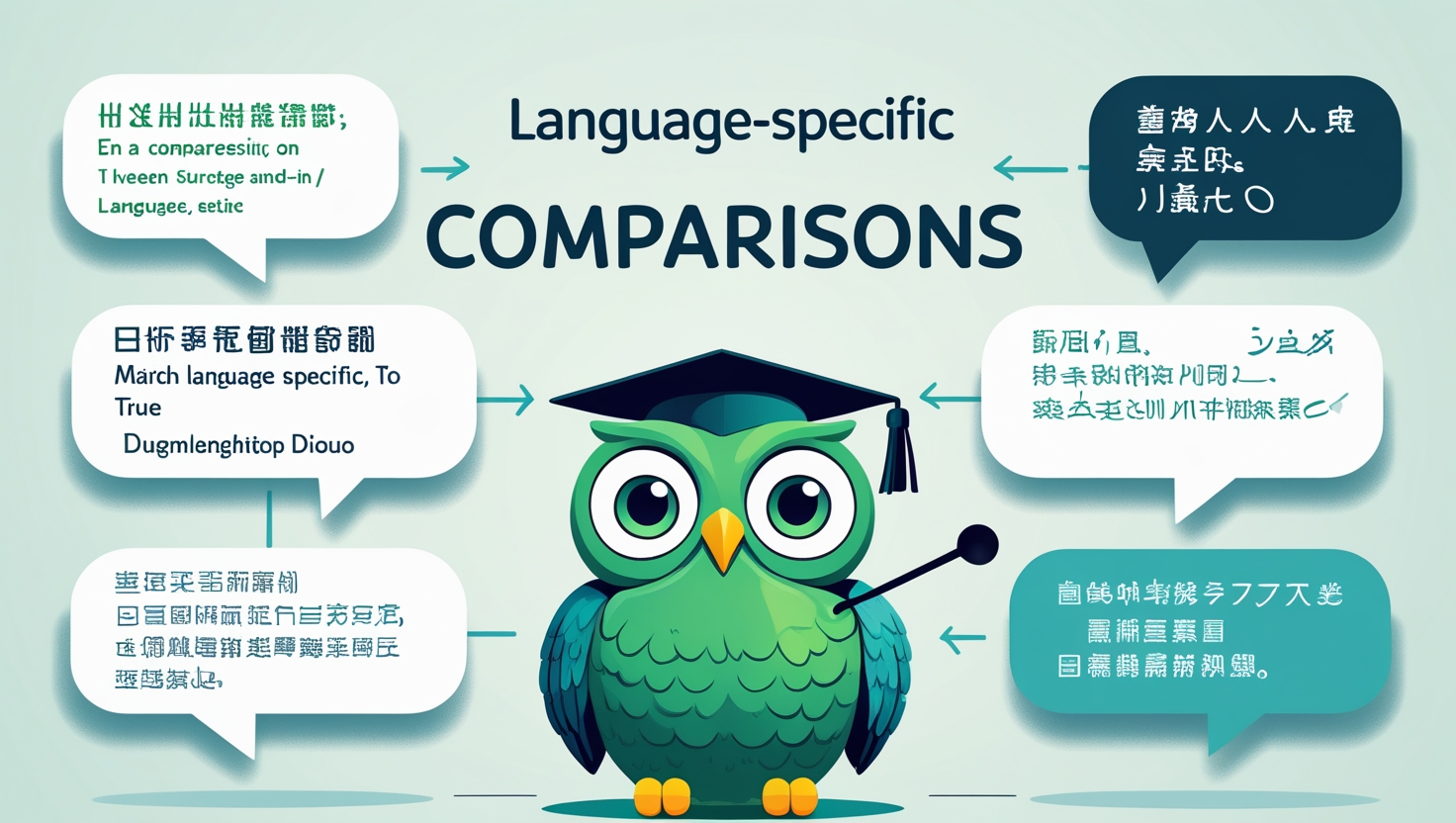
Each app shines in specific languages. In Busuu vs Duolingo, Duolingo offers a wider language variety, including niche options like Hawaiian and Klingon. Busuu focuses on mainstream languages with higher quality. For learners of widely spoken languages like Spanish or French, Busuu’s structured courses outperform Duolingo’s introductory approach.
Japanese Learning Comparison
- Busuu: Focuses on business Japanese and aligns lessons with the Japanese Language Proficiency Test (JLPT), making it ideal for learners aiming for formal proficiency.
- Duolingo: Provides a gradual introduction to writing systems, introducing learners to both hiragana and katakana first before kanji, offering a more foundational approach to the language.
French Learning Comparison
- Busuu: Covers regional dialects and emphasizes business French, making it suitable for professional environments and advanced learners.
- Duolingo: Focuses on everyday conversational French, with practical vocabulary and sentence structures that prioritize daily communication and real-world scenarios.
Practice and Exercise Variety
Practice drives mastery in Busuu vs Duolingo. Busuu emphasizes situational dialogues and real-world scenarios. Duolingo relies on repetition through gamified drills, flashcards, and translations. While Duolingo’s variety engages beginners, Busuu’s immersive exercises are better suited for advanced learners aiming for fluency.
Busuu Exercise Types
Busuu exercises include a variety of formats that support language learning. These range from role-play conversations and writing exercises to listening comprehension and grammar drills. Furthermore, vocabulary building activities are tailored to ensure learners achieve mastery in real-life conversations and formal language usage.
Duolingo Exercise Formats
In Duolingo vs Busuu, Duolingo offers word matching, sentence construction, and translation exercises to engage learners. Speaking practice is emphasized for pronunciation improvement, while multiple-choice questions help reinforce vocabulary and grammar rules. These interactive formats cater to a wide range of learning preferences.
Updates and Platform Development
Constant updates ensure relevance in Busuu vs Duolingo. Duolingo frequently introduces new features and gamified enhancements, keeping its platform fresh. Busuu focuses on refining language-learning tools, maintaining accuracy and depth. Both platforms evolve to meet diverse learner needs but approach innovation differently.
Recent Major Updates
Recent updates have enhanced both platforms. Busuu introduced AI-powered grammar correction and business language courses for professional learners. On the other hand, Duolingo made updates by adding new languages, enhancing speech recognition, and improving its AI features for more efficient learning. Both apps continue to evolve.
Future Development Focus
Looking ahead, Busuu plans to expand its professional certification options, enhancing career prospects for learners. Meanwhile, Duolingo is focusing on increasing its interactive features and language options, promising even more engaging ways to learn languages. Busuu vs Duolingo both have exciting futures with continuous improvements.
Making Your Final Decision

When deciding between Busuu vs Duolingo, consider several important factors. Learning goals assessment is key: identify your professional development needs and time commitment. Evaluate your budget considerations and preferred learning style. A thoughtful decision-making process helps align your language learning needs with the best platform for you.
Learning Goals Assessment
Learning goals assessment is crucial in the Busuu vs Duolingo comparison. Assess your professional development needs, such as language proficiency for work or travel. Determine the time commitment you can dedicate. Also, consider your budget considerations for each platform. Finally, think about your preferred learning style to ensure the chosen app suits you.
Try Before You Commit
- Start with free versions of both apps
- Test for at least two weeks
- Evaluate progress tracking
- Consider upgrade options
Remember, successful language learning often combines multiple resources. Many users report using both Busuu and Duolingo complementarily, along with other tools like Babbel, to create a comprehensive learning experience.
Frequently Asked Question
Is Busuu better than Duolingo?
Neither app is definitively “better” – they serve different purposes. Busuu excels in structured learning and professional development, while Duolingo is better for casual learning and exploring multiple languages. Research shows Busuu users achieve language skills faster (22.5 hours vs Duolingo’s 34 hours for college semester equivalent), but Duolingo offers more language options and is completely free.
Can you become fluent from Busuu?
Complete fluency from any single app is unlikely. However, Busuu can help you achieve up to B2 level (upper intermediate) in your target language. The app is particularly effective when combined with other learning methods. Research indicates 84% of users significantly improve their written language skills through consistent use.
What are the disadvantages of Busuu?
The main limitations of Busuu include its restricted free version and limited language selection (only 13 languages). Native speaker feedback can take up to 60-90 minutes, and many useful features require a premium subscription. The cost is also higher compared to some competitors.
How much does Busuu cost?
Busuu offers two main subscription tiers:
- Premium: $9.99/month
- Premium Plus: $10.99/month Longer subscriptions (6-12 months) offer better value, with rates dropping to around $6-8 per month. A free version is available with limited features.
What is the #1 best language learning app?
There’s no single “best” app as it depends on your goals. Duolingo leads in user numbers with 500+ million users, while Busuu shows the fastest progress rate. Babbel maintains the highest user ratings. The best choice depends on your learning style, goals, and budget.
What happened to Busuu?
Busuu was acquired by Chegg in 2021 for $436 million. The company continues to operate normally, expanding its features and educational partnerships. Under Chegg’s ownership, they’ve enhanced their platform with AI-powered features and currently serve over 20 million users worldwide.
Conclusion
Both Busuu and Duolingo offer valuable paths to language mastery, but they serve different needs. If you’re serious about achieving fluency and don’t mind paying for premium features, Busuu offers a more structured, comprehensive approach. For casual learners or those just starting their language journey, Duolingo’s free, gamified approach provides an excellent entry point.
Remember, the best language learning app is the one you’ll use consistently. Consider starting with Duolingo’s free version to establish a learning habit, then potentially upgrading to Busuu as your needs evolve and you require more structured learning.
Visit For More Blog’s: duolingoabout.com

Welcome to DuolingoAbout.com! Your go-to hub for expert tips, tricks, and guides to mastering Duolingo. Simplify your language-learning journey with curated content designed for learners at all levels.
